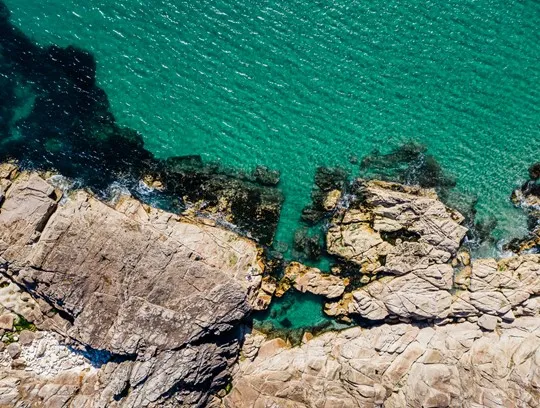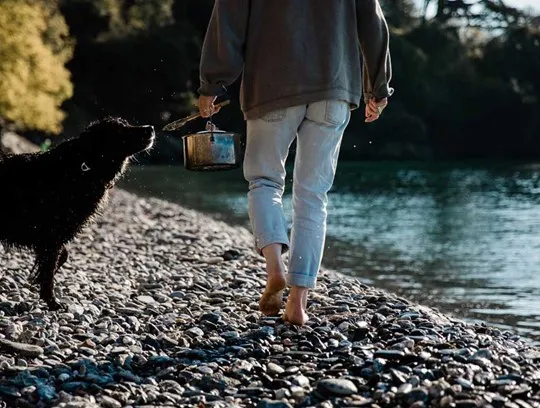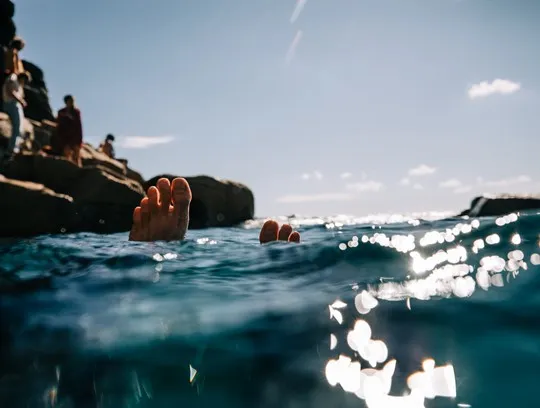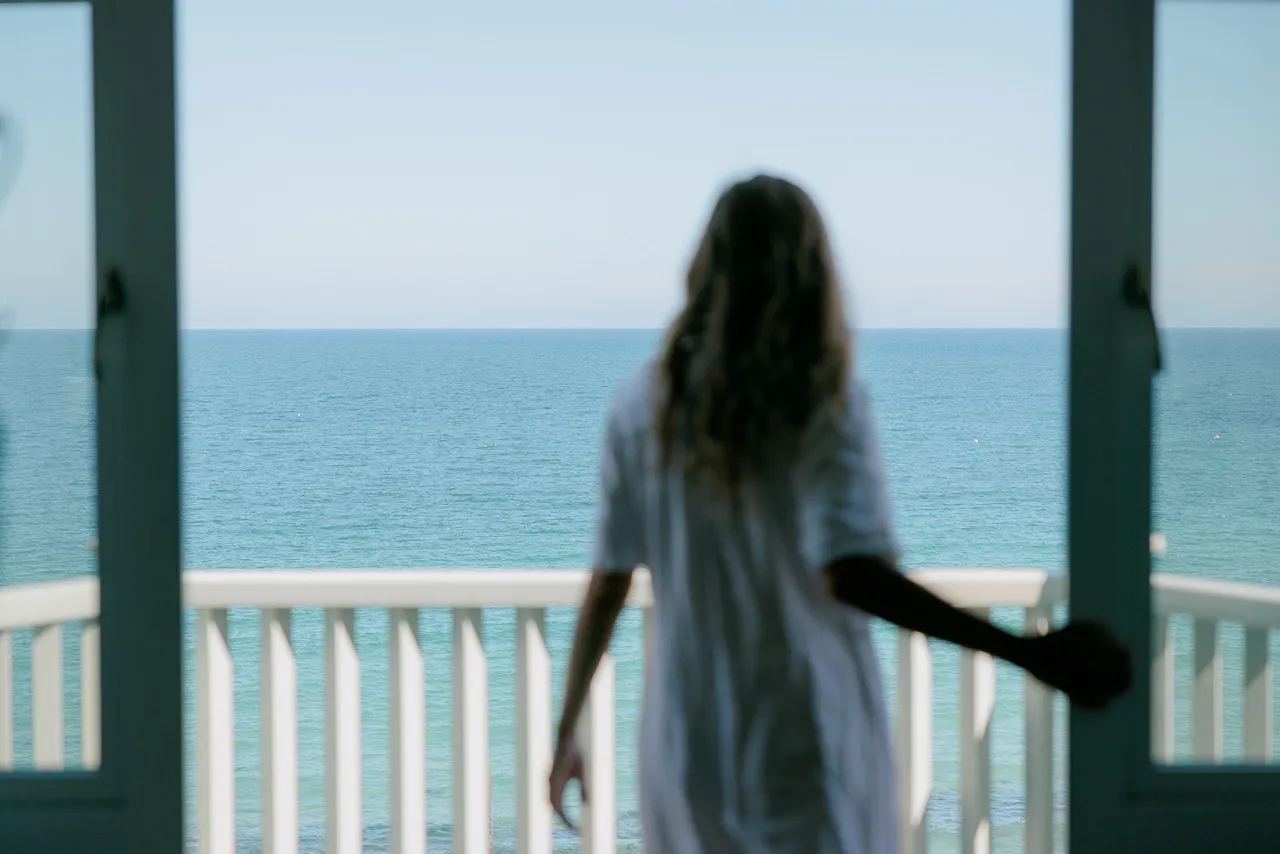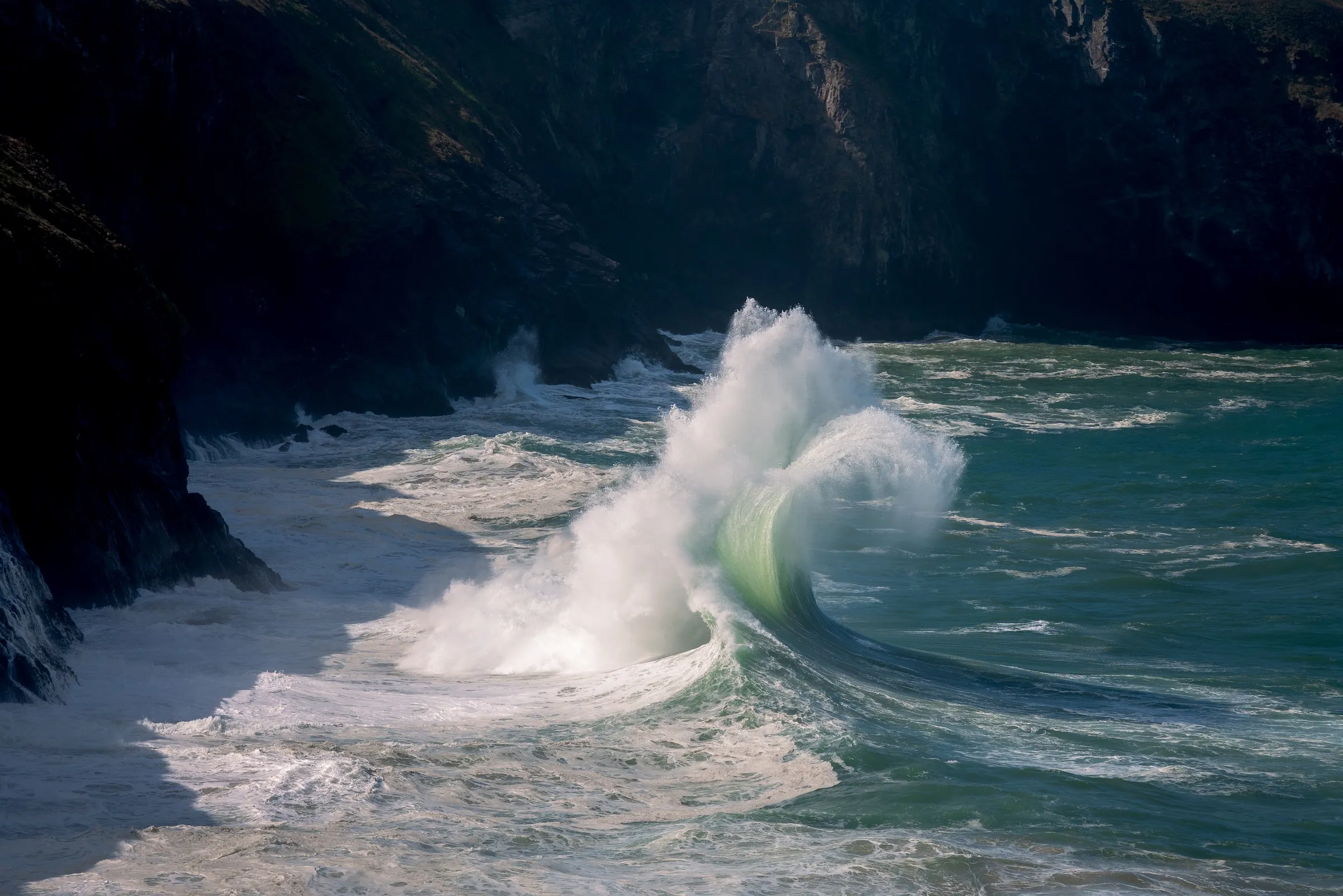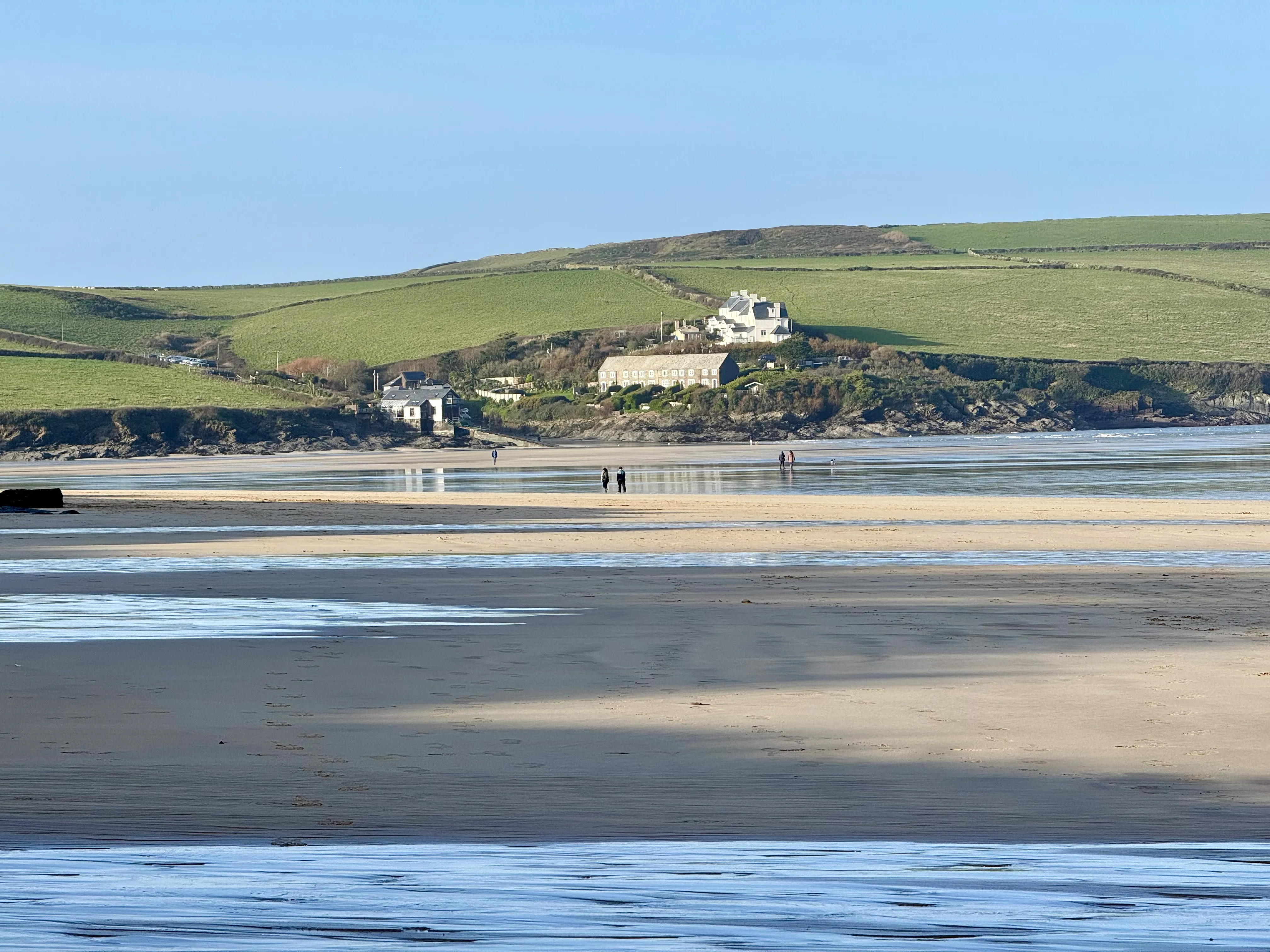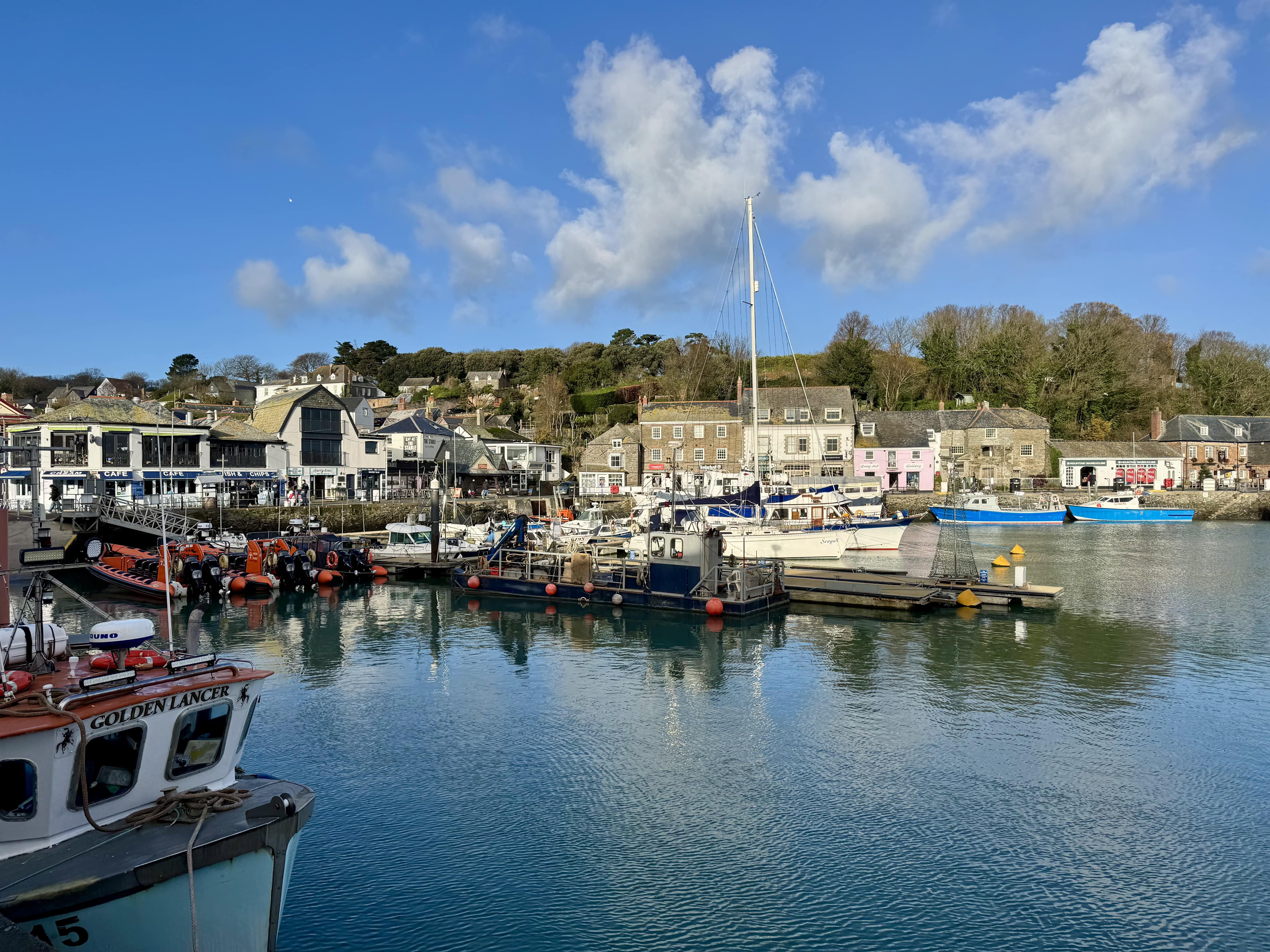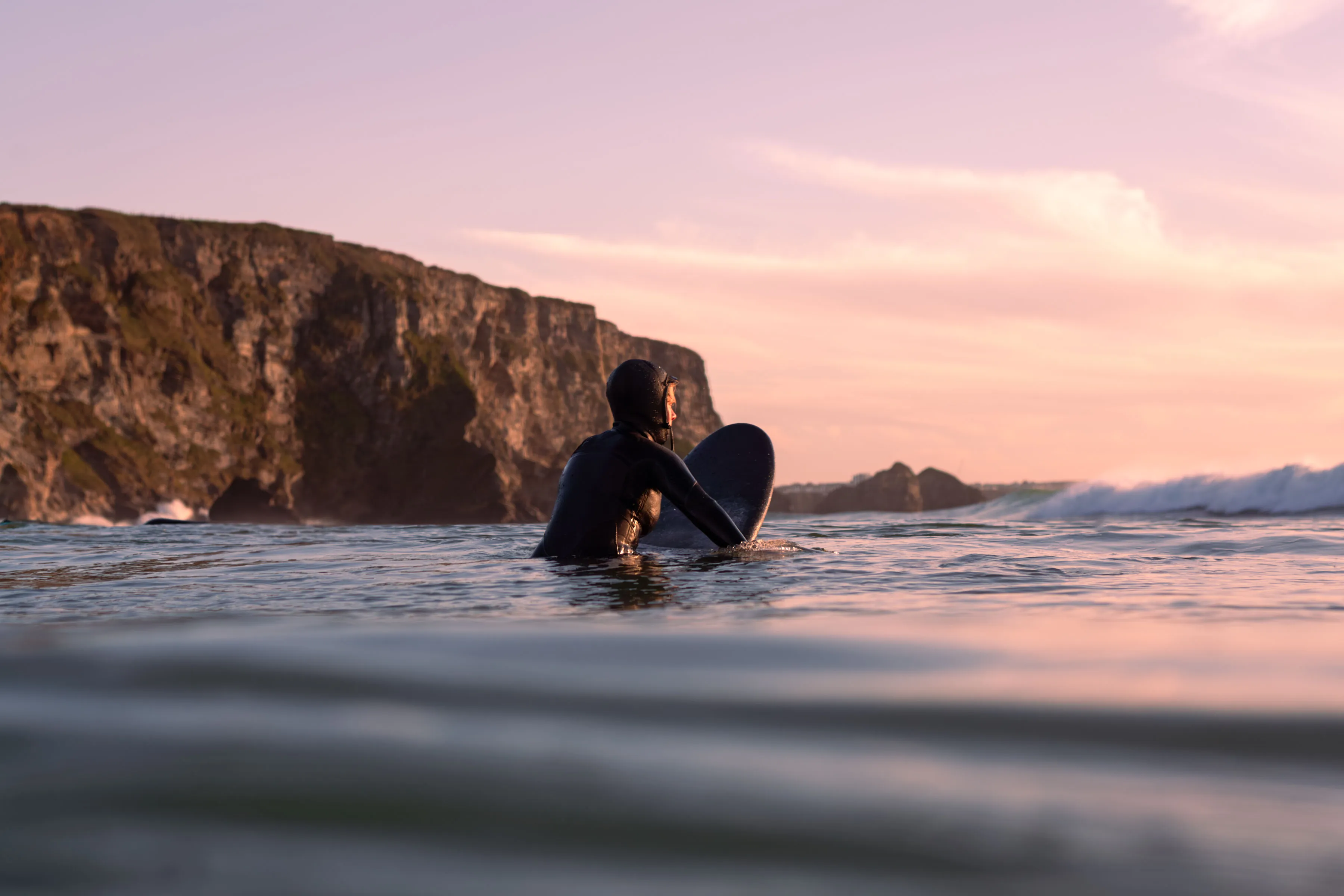Home / Q&A – Wildlife Conservation Biologist & Photographer
Q&A – Wildlife Conservation Biologist & Photographer
15th April 2022
Wildlife conservation biologist and photographer Kaushiik Subramaniam was drawn to documenting life below the surface by his research and the technical challenges of photographing below sea level – a unique sensory experience…
Want to stay in a luxury holiday house with a view of the sea? Check out our cottages with sea views.
How long have you been taking photographs of the underwater environment and what locations have you photographed in?
I’ve been photographing underwater since 2018, while doing research for my Masters degree thesis on whale sharks, and since then I have shot underwater in the UK, Kenya, Sri Lanka and, at the moment, in Mexico.
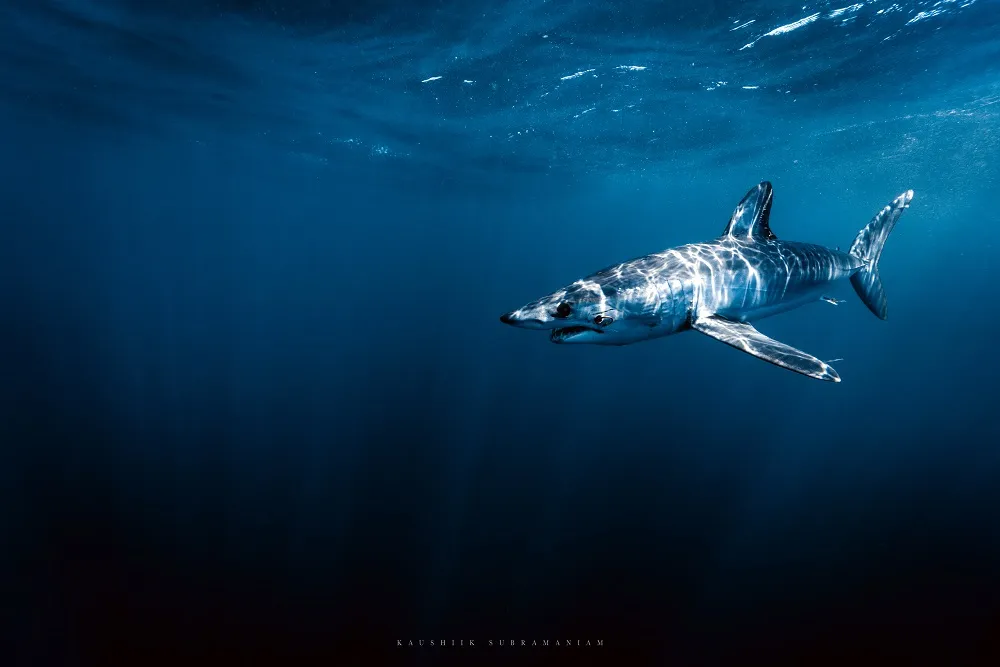
Image credit: Kaushiik Subramaniam
When did you decide this is something you wanted to do and what do you think attracted you to this work?
I’ve always felt comfortable underwater and it went hand-in-hand with my research. It’s something completely different to topside photography; there’s a lot more involved. Conditions are always changing underwater, minute to minute, and can be completely different depending on what light is being shot through the water, for example. It can be dangerous and exciting, on top of thinking about composition. That’s part of what drew me to it, alongside my fascination with underwater life.
“For the most part, I feel that underwater is a much calmer place than on land. A lot of people that scuba dive and freedive have that in common: a feeling of peace and tranquillity underwater.”
What affect does being underwater have on your senses?
It’s difficult to explain but it is almost like some senses are muted underwater and some are heightened. Hearing can be muted or dulled down but there are noises: fish make clicking sounds and even coral on a reef makes noise.
Eyesight is very important; although, the light can play tricks on you in the water and it’s not always easy to judge depth properly. So, it does take a bit of getting used to.
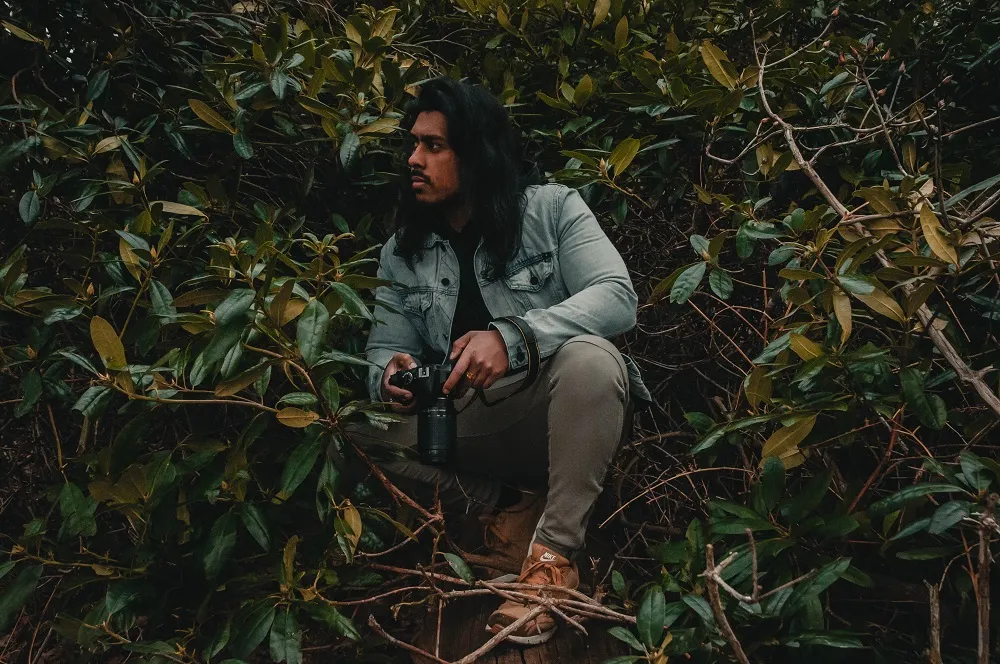
How do you approach photographing wildlife underwater?
First and foremost you’re trying to find the animal then you have to think about composition and lighting. It’s not like on safari where you can move a car to get the right shot. You are being moved by the ocean, sometimes against the current and really all kinds of different things can go wrong when you’re trying to get the shot you want. It’s a mix of waiting and being proactive to find the shot.
You’re also aiming to have minimal impact on wildlife behaviour so you are documenting wildlife in as natural environment as possible. Trying not to create stress and that varies not only between animal but also individual to individual within a species.
“To be able to see them in our waters was incredible They are really elegant, beautiful looking sharks and very fast too. So to have one stick around me and my camera was amazing.”
Just because a text book says a species is ok with people being nearby, it doesn’t necessarily mean the individual animal follows that. You have to approach it slowly and keep your distance, judge how the wildlife is reacting to you. It’s very obvious normally, when wildlife doesn’t want you around it. An animal will try and get away, as far as possible, and chasing it is almost the worst thing you can do.
What senses do the underwater animals you’ve encountered use around you?
In UK waters, I have spent the most time with grey seals and they are quite intelligent mammals. In many ways they behave like underwater dogs. The way they look at you. The way their eyes move. They are such curious little things and very sneaky. They will be behind you, keeping an eye on you. Then they will come closer and have a nibble of your fins, play with you. Being in the water with seals is so much fun.
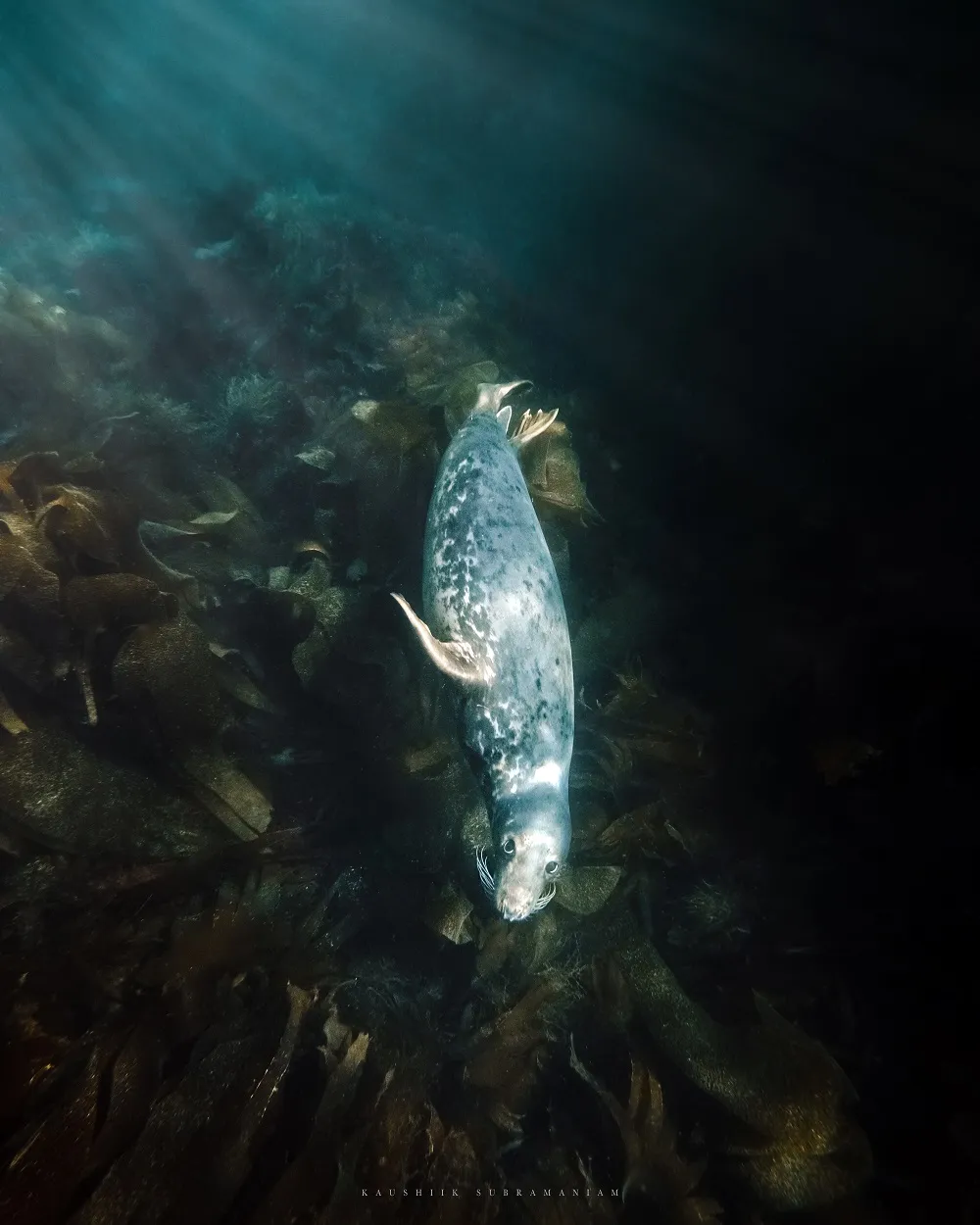
Image credit: Kaushiik Subramaniam
On the other hand, shark species will keep an eye on you from a distance. For example, tiger sharks in the Maldives are big enough to know you are not a threat to them and they will look at you in the eye try to figure you out. The level of curiosity can vary from individual to individual, some will even prod you with their nose. Like other sharks they also rely heavily on their sense of small and electro receptors. Cameras give off more electrical impulses than humans, so sharks can be attracted to the equipment we shoot with.
Check out more of what West Cornwall has to offer and explore our holiday lets in The Lizard Peninsula.
“Going out with a friend snorkelling on a shallow reef (a ridge of rock, coral or sand near the surface), wherever it may be, you can find incredible wildlife.”
Can being underwater ever be an overwhelming sensory experience?
For the most part, I feel that underwater is a much calmer place than on land. A lot of people that scuba dive and freedive have that in common: a feeling of peace and tranquillity underwater. It certain conditions it can be overwhelming; I was recently in the water with 15 tiger sharks and it was hard to know where to look!
What have been some of your most memorable encounters with underwater life?
I did a long spell researching whale sharks out in the Maldives and had a number of incredible encounters with them. They’re the biggest fish in the world with stunning patterning.
I was also lucky enough to swim with blue sharks. When we think about UK waters, sharks aren’t the first things that come to mind but we are very lucky that we have a rich abundance of shark species around the UK.
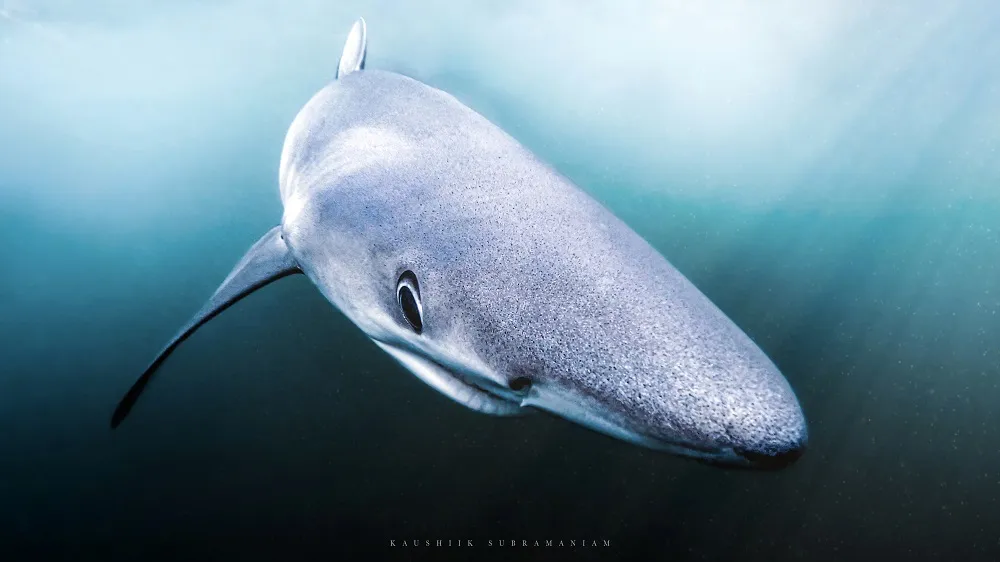
Image credit: Kaushiik Subramaniam
Blue sharks are very much endangered across the world unfortunately, the victim of shark fining and the shark meat industry. To be able to see them in our waters was incredible. They are really elegant, beautiful looking sharks and very fast too. So to have one stick around me and my camera was amazing.
I’ve recently been freediving, and photographing wildlife from the surface, in Mexico. At this time of year, grey whales migrate down from Canada to Mexico, where they calve. In this protected environment they are very curious and playful with humans. They will come next to the boat and look at you in the eye. The mothers almost encourage calves to come and interact with the boat, and you have these 40ft wales under your boat pushing it up and down, playing hide and seek. It’s a very unique experience!
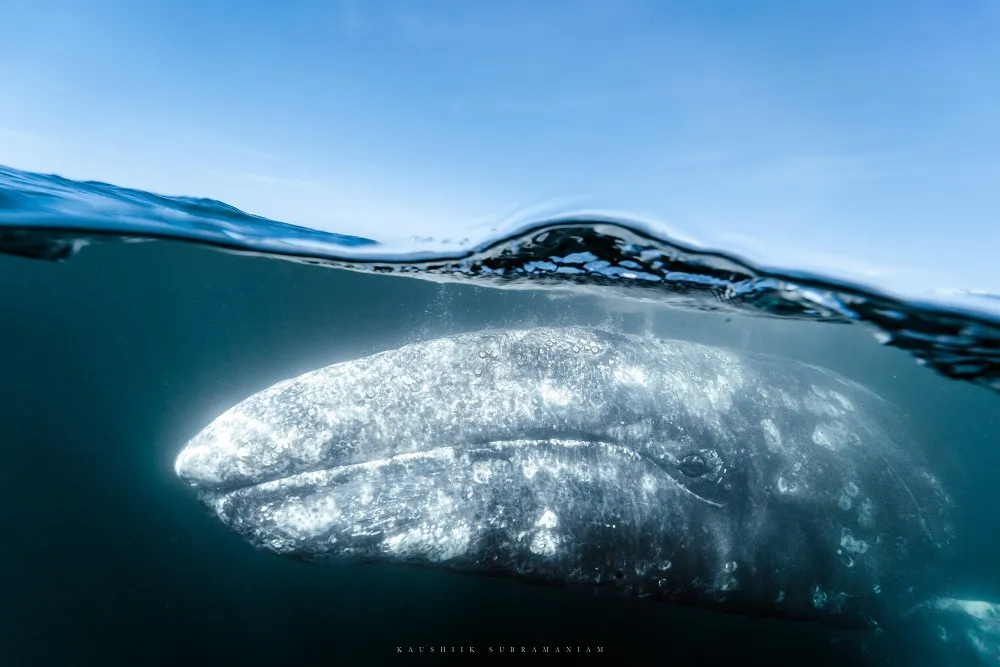
Image credit: Kaushiik Subramaniam
What tips do you have for anyone interested in exploring the underwater world either for the experience, or to capture the experience through photography?
Going out with a friend snorkelling on a shallow reef (a ridge of rock, coral or sand near the surface), wherever it may be, you can find incredible wildlife.
With scuba diving, sorry for the pun, I would say just take the plunge. You can do a DSD, Discover Scuba Dive course, so you don’t have to have a qualification you just have to do one pool session and then you can go out for a shallow dive. Depending on the location, you can see incredible things and that might give you the push you need to do your certificates and increase your ability in the water.
If you want to do photography, it’s important to be comfortable in the water first before you put a camera under the water. You want to be able to concentrate on the photographs once you are confident with diving.
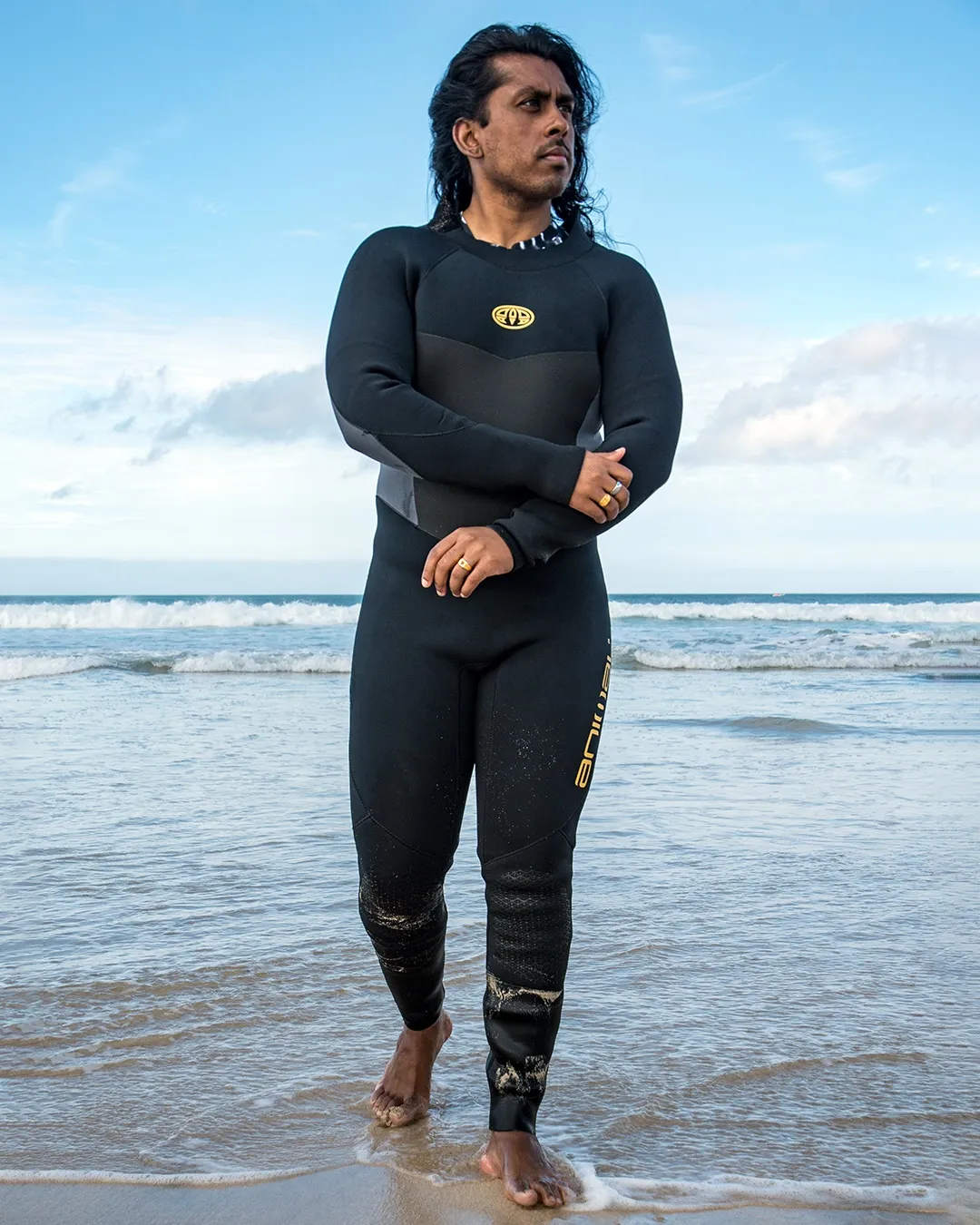
Image credit: Kaushiik Subramaniam
Discover Kaush’s work here, and follow his underwater adventures on Instagram.
Find a retreat near Cornwall’s underwater worlds and browse our special offers.
